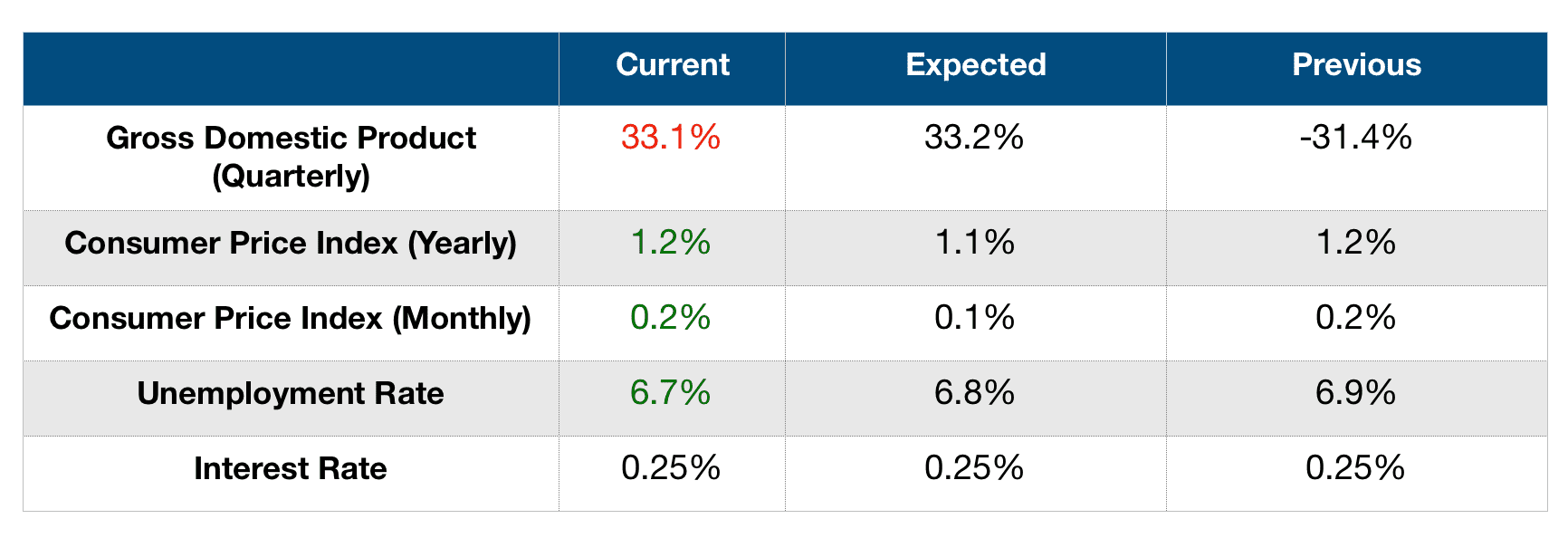The US Federal Reserve recently announced its decision to leave the cash rates unchanged, remaining in line with analysts' expectations.
The bank decided to leave the rates close to zero, at 0.25 percent, claiming that the economic situation is improving, though still below pre-pandemic levels.
In addition, the Fed pledged to continue with its bond purchases until the economy substantially improves.
During a press conference that followed the announcement, Federal Reserve Chairman Jerome Powell commented that if economic recovery slows, the Fed would expand its balance sheet, reinforcing its pledge to aid the economy until it fully recovers.
Regarding current inflation levels, Powell said that there is empirical evidence that there are disinflationary pressures pushing down prices across the globe, despite the current monetary conditions.
“It’s not going to be easy to have inflation move up...it’s going to take some time. It took a long time to get inflation back to 2 percent in the last crisis,” said Powell after being asked about the price levels. He added that even with the very high level of accommodation that the bank is providing it will take some time to get inflation levels back to the desired level.
The latest Consumer Price Index figures, though higher than expected, are still way below the Federal Reserve’s inflation target, which is currently set at 2 percent.
The spread of the COVID-19 virus continues putting the economy under pressure and poses considerable risks to the economic outlook in the medium term. So far, 17,394,314 coronavirus cases have been reported in the United States, as well as 314,629 total deaths. The recent surge in infections is expected to be countered by the current vaccination campaign.
Powell commented that despite the recent, positive advancements regarding the COVID-19 vaccines, the late surge in infections is concerning, and added that the upcoming months may be very challenging.
Economic Calendar
Some important data about the current state of the US economy have been released this week. On Tuesday, the Board of Governors of the Federal Reserve reported that industrial production rose higher than expected in November, gaining 0.4 percent (month-on-month), though lower than the previous month’s 0.9 percent. Analysts had expected a 0.3 percent expansion.
On Wednesday, the markets learned that consumption levels shrank in November, signaling that the economy is in shambles. Retail sales dropped by 1.1 percent, higher than expectations of a 0.3 contraction and substantially worse than the previously reported 0.1 percent contraction. Excluding the automobile sector, retail sales dropped by 0.9 percent after going down by 0.1 percent in October. The figure was also below analysts’ expectations of a 0.1 percent gain.
The preliminary Manufacturing PMI reading of 56.5 signaled an expansion of the sector in December. This is lower than the previous month’s reading of 56.7 and higher than forecasts of 55.7.
The services sector also showed signs of expansion – albeit slower than expected – with a reading of 55.3, after the previous month’s reading of 58.4. The Composite PMI showed a reading of 58.6, higher than the previous month’s 55.7 and showing an expansion of the business sector.
Market Optimism Puts Downside Pressure on the Dollar
The optimism that has been brought into the markets due to the beginning of the vaccination campaign has put negative pressure on the dollar, favoring riskier currencies and assets like US stocks.
"As the world gets more optimistic about the outlook for growth in 2021, the dollar has softened,” said an analyst at CMC Markets.
So far this week, the US Dollar Index, which measures the performance of the dollar against a bundle of its main competitors, fell 1.18 percent, giving up the previous week’s gains. In monthly terms, the currency continues its consecutive two-month losing streak, falling by 2.14 percent after dropping 2.31 percent in November.
Economic Data Improve
Taking into account our last report, economic data seem to have improved, mainly in the inflationary realm.
The quarterly gross domestic product figure has been revised down since our last report, now standing at 33.1 percent, slightly lower than expected and considerably better than the previous quarter’s 31.4 percent contraction.
The latest Consumer Price Index report showed a better-than-expected performance in the monetary realm. The CPI went up by 1.2 percent in yearly terms in November, remaining unchanged from the previous month’s figure, though still higher than expected. In monthly terms, it rose by 0.2 percent, higher than expected and remaining unchanged from the previous month’s figure.
The latest labor market data also missed analysts' expectations in a positive way. Unemployment stood at 6.7 percent in November, lower than October’s 6.9 percent and below expectations of 6.8 percent.
Upcoming Events
Tomorrow, the Department of Commerce will release the building permits and housing starts data.
Also tomorrow, the US Department of Labor will publish continuing and initial jobless claims data.
The Philadelphia Federal Reserve will release its manufacturing survey, also on Friday.

